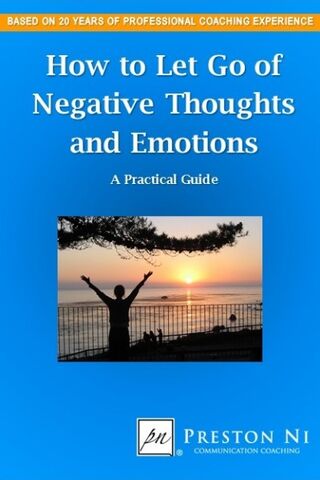Stress
How to Stay Cool Under Pressure
How to keep cool under pressure: Handling anger, nervousness, fear & indecision
Posted August 4, 2013

Most of us experience some level of stress in life. How we handle stressful situations can make the difference between being assertive versus reactive, and poised versus frazzled. When under pressure, the most important thing to keep in mind is to keep your cool. Here are some quick tips, with references from my books (click on titles): "How to Let Go of Negative Thoughts & Emotions" and "Are You Highly Sensitive? How to Gain Immunity, Peace, and Self-Mastery!".
1. If you feel angry and upset with someone, before you say something you might later regret, take a deep breath and count slowly to ten. In most circumstances, by the time you reach ten, you would have figured out a better way of communicating the issue, so that you can reduce, instead of escalate the problem. If you're still upset after counting to ten, take a time out if possible, and revisit the issue after you calm down.
2. If you feel nervous and anxious, put cold water on your face, which triggers the mammalian diving reflex and immediately slows the heart rate between ten to twenty-five percent. It's also helpful to get fresh air and take deep breaths from the diaphragm. Avoid caffeinated beverages which can stimulate your nervousness (1)(2)(3).
3. If you feel fearful, depressed, or discouraged, try intense aerobic exercises. Energize yourself. The way we use our body affects greatly the way we feel. As the saying goes - motion dictates emotion. As you experience the vitality of your body, your confidence will also grow (3)(4).
4. If you feel overwhelmed, confused, stuck, or uninspired, go outdoors and clear your head.

Go into nature and surround yourself in colors of green and blue, which have a calming effect (5)(6)(7). Find a panoramic view and look out into the distance. Walk. Take deep breaths. Empty your mind. Come back with a fresh perspective.
5. If you feel uncertain or indecisive, do a cost-benefit analysis. For example, if you’re having trouble deciding between staying at your current job or leaving, put each choice on a piece of paper with a line down the middle. With each option, list all the pros on one side, and the cons on the other side. If you like, score on a scale of 1 to 5 each pro and con item on the lists to weigh their relative importance. As you do so, the most logical decision will often emerge.
However, if you still feel uneasy after making a logical choice, put the analysis away and sit with the decision for a while. Go for a walk as recommended in tip #4 above. A good decision, especially an important one, should allow you to feel more at peace.


For more tips on strengthening emotional composure and resilience, see my books (click on titles): "How to Let Go of Negative Thoughts & Emotions" and "Are You Highly Sensitive? How to Gain Immunity, Peace, and Self-Mastery!".
Follow me on Twitter, Facebook, and LinkedIn!
© 2013 by Preston C. Ni. All rights reserved worldwide. Copyright violation may subject the violator to legal prosecution.
_
References
(1) Marazziti, Donatella, Angela Di Muro, and Paolo Castrogiovanni. Psychological stress and body temperature changes in humans. Physiology & Behavior (1992).
(2) Speck DF, Bruce DS. Effects of varying thermal and apneic conditions on the human diving reflex. Undersea Biomed Research (1978).
(3) Amen, Daniel G. Change Your Brain, Change Your Life (1999).
(4) Petruzzello, Steven J., Daniel M. Landers, and Walter Salazar. Exercise and anxiety reduction: Examination of temperature as an explanation for affective change. Journal of Sport & Exercise Psychology (1993).
(5) Margaret P. Calkins. Using Color as a Therapeutic Tool (2010).
(6) Itten, J. The Art of Color: The Subjective Experience and Objective Rationale of Color (1997).
(7) Reeves, V. Color and its effect on behavior modification in correctional detention facilities. Research and Design (1985).


